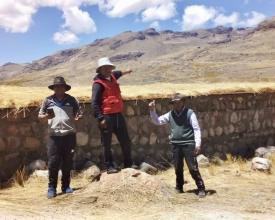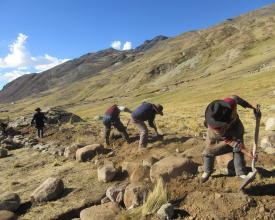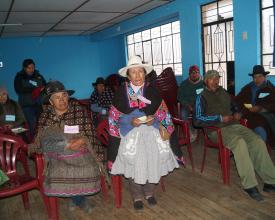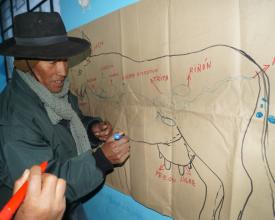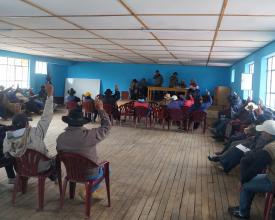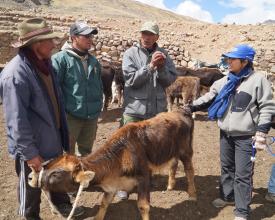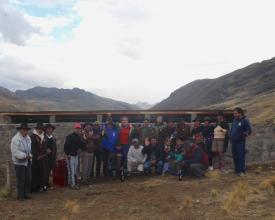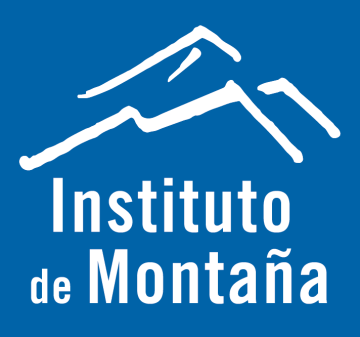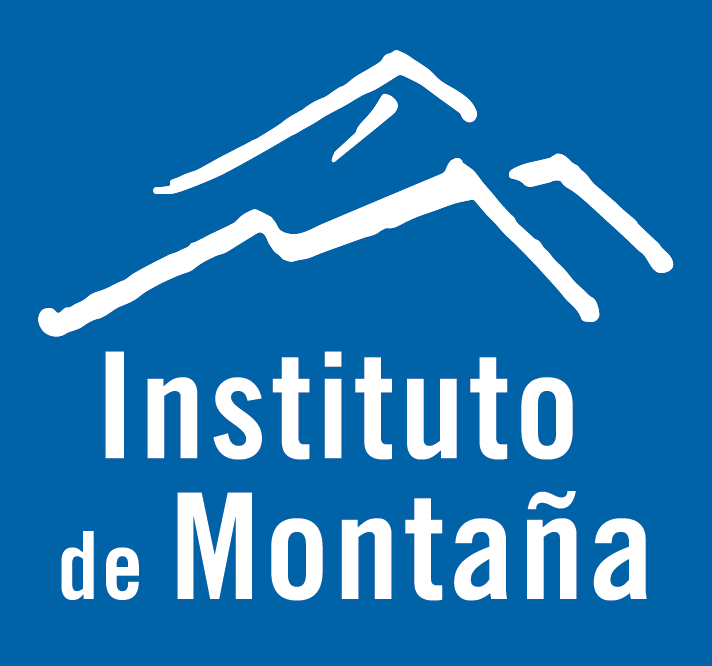
Building trusting relationships to reduce climate risk: A Case Study of the Tanta community in Peru
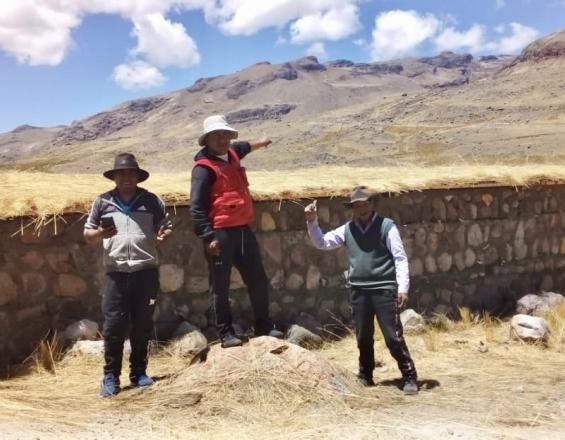
Continuing the work of the Mountain EbA project, the Tanta community and Instituto de Montaña implemented an Ecosystem-based Adaptation (EbA) measure in partnership with the Nor Yauyos-Cochas Landscape Reserve and IUCN. Our solution combined local knowledge with current science and technology and comprised three components: Strengthening of community organization, Strengthening local skills and knowledge, and Green-gray infrastructure. Through a participatory process, the community proposed to build a climate shed in response to increased disease and animal mortality due to extreme weather events. Making the shed a reality renewed the community's trust in cooperating with institutions, which had been eroded by previous bad experiences. Thanks to this and to the strengthening of the livestock department (committee) and the community itself, the organization improved, the work was completed, and livestock management was resumed, which is key to improving the health of the ecosystems.
Context
Challenges addressed
-
Climate variability affects livestock production: extreme events such as frost and weather-related diseases increase livestock mortality.
-
Degraded pastures and wetlands due to overgrazing in turn decrease livestock productivity.
-
Weakened organization: past projects and initiatives have divided the community, generating distrust.
-
The tension between the population and the authorities due to personal interests has been a barrier in the process of establishing trusting relationships with the community.
-
Gender inequality hinders women's participation in decision-making.
-
Labor shortage due to migration.
-
Most of the communal territory is family usufruct, which represents a challenge for collective decision-making.
-
Increase in diseases affecting livestock in the highlands. Cattle ranchers do not know how to treat them and no competent state agency is addressing the problem.
Beneficiaries
-
Direct: 79 families (approx. 350 people) of the Tanta Community.
-
Indirect: Populations living in the middle and lower part of the Cañete river basin.
Location
Process
Summary of the process
Three components or building blocks contribute to the sustainability of the initiative: infrastructure, combined with actions to strengthen technical and organizational capacities.
Building the relationship with the community organization in Tanta was key to the joint design and implementation of the EbA measure. Likewise, capacity building was achieved through a dialogue between traditional and scientific knowledge: community members and professionals in rural construction, veterinary medicine, and rangeland ecology designed and defined the measure, with the facilitation of the project team. These two components were key to achieving community commitment, not only in the joint design and implementation of the green/gray infrastructure but also in assuming commitments for its operation and maintenance, as well as in implementing the plan for the use of the communal farm. The effort made has built ownership, which will contribute to sustainability.
Components:
- Strengthening of the communal organization.
- Strengthening of local capacities and knowledge.
- Infrastructure/Technology recovery.
Building Blocks
Strengthening of community organization
Under the "Strengthening community organization" component, the project worked with the Tanta community to develop a livestock management strategy, with the support of a specialist, to improve livestock management in the community’s farm territory. The objective was to fortify the community’s collective decision-making process in regards to the management of its natural resources, thus contributing to the recovery of grazing areas, which in turn ensures having the necessary level of food for livestock and improving both productivity and ecosystem services for water regulation.
The livestock management strategy has been the product of a participatory process facilitated by Instituto de Montaña and led by the authorities and the community's livestock department (committee). As part of this process, visual materials (maps and infographics) have been developed to graphically represent the proposed management plan and rotation of livestock among the different sectors of the communal farm. These visual materials are exhibited in the community premises so that the community members can follow up on the plan and the agreements and commitments made by all.
Enabling factors
- Participatory approach to decision-making and planning.
- Interest and commitment of the local population.
- Relationship of trust between the community and the implementing institutions.
- Availability and commitment of the authorities in charge, such as the boards of directors and specialized committees.
- Traditional knowledge of the local population and technical knowledge of external experts.
- Participation of the Nor Yauyos-Cochas Landscape Reserve (NYCLR) team.
Lesson learned
-
Working on community strengthening and organization is a process that takes time but is essential to achieve long-term results.
-
The project needs to be flexible enough to modify plans in the face of unexpected situations. This also contributes to building trust.
-
In the face of the initial distrust towards external institutions, the permanent presence of Instituto de Montaña's field staff and their involvement in the community's day-to-day life was important.
Strengthening local skills and knowledge
This component has been transversal to the entire project and included training and workshops on livestock and pasture management, animal health, and planting and harvesting water, carried out in collaboration with the Universidad Nacional del Centro and external specialists. These activities helped to raise awareness among cattle ranchers and managers of the communal farm and testimonies indicate that their skills in these areas have increased.
Local knowledge was key to developing the livestock management strategy and the shed's design and construction. The use of ancestral technologies existing on the ranches, such as stone corrals, and local materials were chosen.
As part of the communication activities, an awareness campaign was developed with the support of the Rare organization to promote sustainable grazing practices within the community. The campaign, which used the slogan "Smart grazing is the pride of my people", included radio soap operas, comics, and plays with the participation of women and men of all ages. This helped raise awareness among the population about the importance of proper pasture and livestock management and helped disseminate information about the project at the community and NYCLR levels.
Enabling factors
- Use of communication tools to disseminate information about the project and raise public awareness about climate change, the importance of adaptation actions, and the sustainable management of natural resources.
- Dialogue between local knowledge and technical-scientific knowledge, facilitated by specialists in participatory processes.
-
The active collaboration and leadership of the livestock department (committee) were key to achieving active participation of the local population during the workshops.
Lesson learned
-
Adaptation measures, from their design, must incorporate local knowledge and respond to community priorities and perspectives to ensure their effectiveness, viability, and sustainability.
-
It is essential that the field team is trained in the application of participatory approaches, methods, and tools that contribute to improving the quality of participation and facilitate collective learning and dialogue between local, technical, and scientific knowledge.
-
It is essential to incorporate all community members in communal assemblies to encourage participation.
-
Communication activities help to raise levels of trust and participation, as well as local ownership.
-
Diversify work with local partners, combining workshops with other methods, practical tools, and fieldwork (of the "learning by doing" type).
-
Develop activities that involve women, youth, and other groups within the community.
-
Maintain a high field presence and share daily updates with the community.
Improvement of green-gray infrastructure
The EbA measure implemented in Tanta includes both green and gray infrastructure.
The green infrastructure, which is the ecosystems, was improved by promoting appropriate pasture and livestock management practices that contribute to the positive conservation status of the pastures. To this end, work was done to strengthen community organization, the participatory design of the livestock management strategy, and the bolstering of local knowledge.
In terms of gray infrastructure, the community prioritized the construction of a shed to reduce the exposure of livestock to climate hazards intensified by climate change, such as hail, and frost, simultaneously protecting them from strong winds and intense sunlight.
The construction of the shed began with the participatory design of the infrastructure, advised by a professional from the local university and validated in a community assembly. Meetings were then held with the livestock department (committee) and directors to plan out the work and the transfer of materials. Prior to the start of construction, the community made an offering to the mountain, a custom they still maintain.
The shed is now operational, the community reports a decrease in animal mortality, and maintenance is being carried out, especially on the roof, using local materials.
Enabling factors
- Consolidated community organization, the existence of a participatory pasture and livestock management plan, and augmented local knowledge on key issues such as climate change and sustainable conservation of high Andean ecosystems.
- Open and respectful communication as a central component.
- The leadership of local authorities and specialists (board of directors and livestock department) was promoted.
- Dialogue between local and technical knowledge.
- The community provided the labor for construction.
- Use of local materials such as stone and straw.
Lesson learned
-
During the planning phase, allocate sufficient time for critical activities such as infrastructure work, impact monitoring, communications, and systematization of results.
-
Local/community work for infrastructure development and/or maintenance may take longer than anticipated.
-
Seek the commitment and support of local authorities and promote their leadership in decision-making processes. Build partnerships with other institutions in the area to make the EbA measure more sustainable.
-
Participatory planning, local governance, and ownership are key to the success of the measure.
Impacts
The construction of the shed protects the cattle, especially the calves, from extreme weather events such as frost and hail, thus helping to reduce their mortality. The infrastructure also serves as a barn for the milk-producing cows. These improvements have had a positive impact on families' livelihoods, who depend mainly on livestock for their livelihoods.
Thanks to the trainings, the community now has a better understanding of the potential impacts of climate change on ecosystems and their future productivity. This, along with the strengthening of local organization, has led to an improved pasture rotation plan. The community has resumed the communal farm's livestock management process, defining sectors for each species: alpacas, sheep, and cattle.
During the trust-building process between the community and the institutions, and as an initiative of the Nor Yauyos-Cochas Landscape Reserve (NYCLR), the project supported the community in developing a proposal for the recovery of natural pastures. The community received a grant of US$27,950 through the Ministry of the Environment's "Mechanisms of Rewards for Ecosystem Services" (MRSE-FIDA) program. This contributes to the sustainability of the project and the achievement of adaptation and sustainable livelihoods objectives.
Sustainable Development Goals
Story
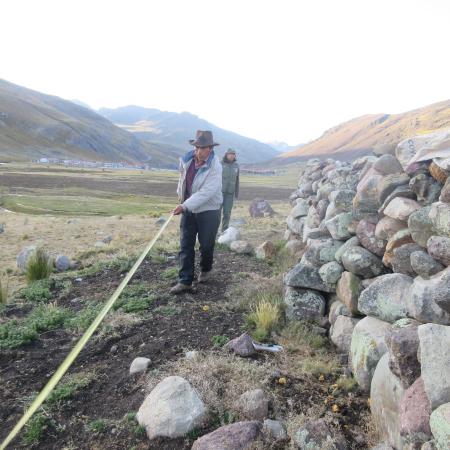
Excerpt from the testimonies of Clemente Lázaro and Nancy Cangalaya, former president of the Tanta community livestock department (committee) and Justice of the Peace of the Tanta district, respectively.
"The climate has changed quite a bit. The rain is no longer like it used to be; when it wants to rain, it rains and when it doesn't, it doesn't. We feel quite harmed by climate change. Before, the rain used to start in November and stays until April. Now it comes late, in January, and leaves quickly, by March." (Nancy Cangalaya).
"This affects our land, the natural pastures are no longer the same, they no longer develop. More than anything it affects our livestock. Our health too: we have more respiratory diseases, us and our animals. Now we have to rely on medicine. There are more expenses for the medicines we have to give to our animals.
Water is also affected. There is no more snow and the lagoon has dried up; there is no more water to drink. (Clemente Lázaro)
"The project, with its workshops and training, has helped us a lot. For example, the training on grazing; where we have learned that according to the size of the land we have, we must have a limited number of animals, because otherwise the pastures will not supply. If we overgraze, we are depredating our land. We have also participated in health-related trainings, we have been given several workshops. This is something we should always have, so that people can learn more. (Clemente Lázaro)
"The shed has also helped us. We keep our calves there and they don't get wet. We just milk there and it helps us a lot because they don't get sick and there is less mortality. Although it also depends on the people who handle the animals, the shepherds. Sometimes they are not very careful and do not vaccinate them at the right time, due to lack of management, but when they bring them [to the shed] they are protected. That is why the shed has benefited us both at the family and community level; and it is a model for other projects that also want the shed, so that they can replicate it". (Clemente Lázaro)
"Chumpes [grazing area] also has a more grown and more populated pasture and the infiltration channel is irrigating." (Nancy Cangalaya)

